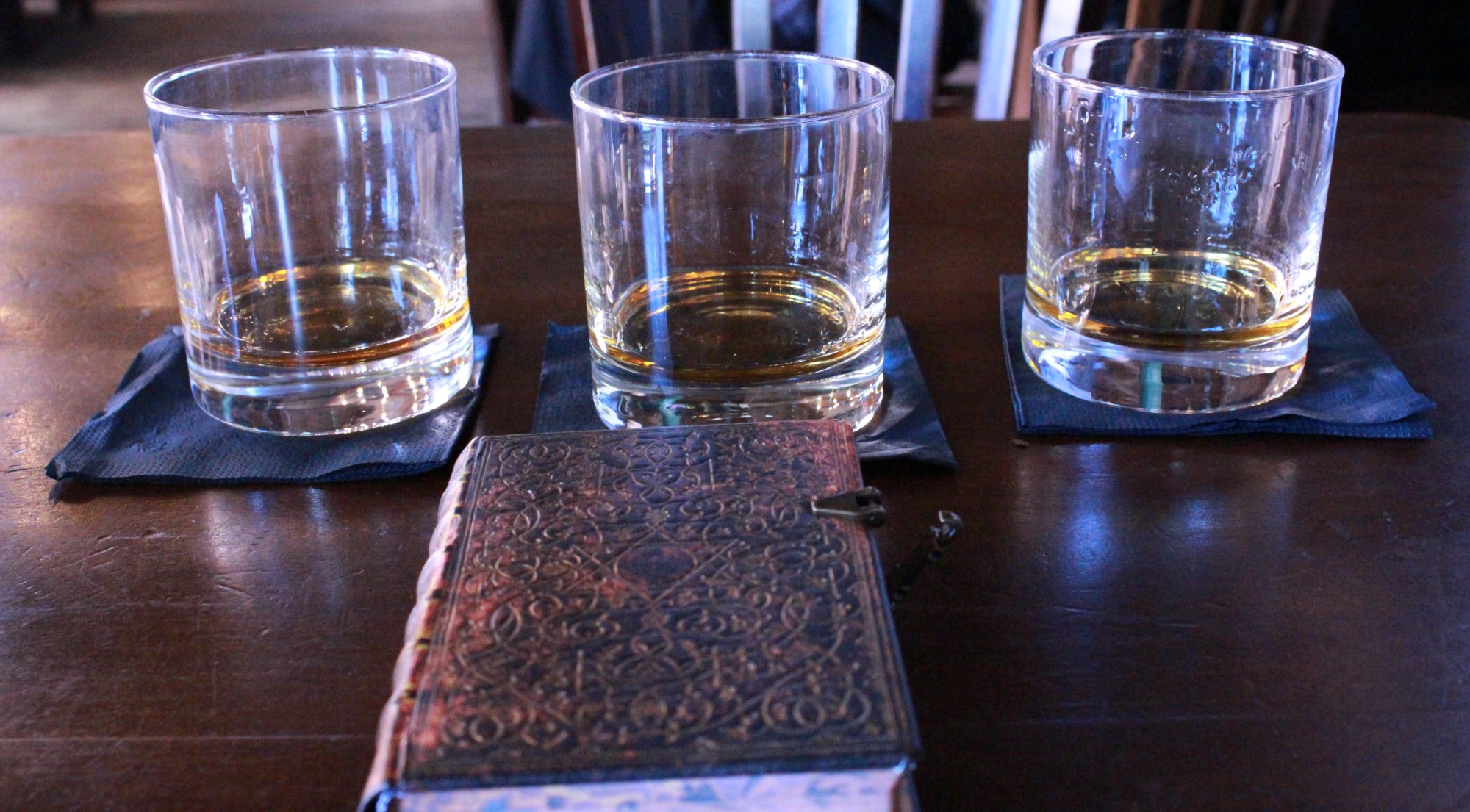Opportunities to speak with the real distillery masters of Kentucky come few and far between when you live this side of the pond. So when I received an invitation to a Masterclass with Drew Mayville – Master Blender at the Buffalo Trace distillery – there wasn’t even a question about whether it was worth the half-days leave and three and a half hour drive on a Wednesday afternoon.
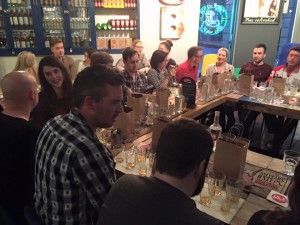 The setting was Rub Smokehouse and Bar, and the event was in fact the occasion for me updating my entry on Nottingham, so check out that article for more comments on the venue.
The setting was Rub Smokehouse and Bar, and the event was in fact the occasion for me updating my entry on Nottingham, so check out that article for more comments on the venue.
So alongside a group consisting of several marketting/PR type folks, some bar staff and no small number of Nottingham university students (some of whom represented the ‘Flair’ society which, as I understand it, has something to do with cocktail mixology) I gathered around to hear Drew’s insights and, most importantly, to taste a few very exclusive bourbons.
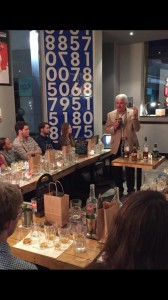 Drew began by explaining what it is that a Master Blender actually does. Most people have heard of a ‘Master Distiller’ (in no small part thanks to the ‘Master Distiller’ Jack Daniels range that seems to be everywhere at the moment), but what is ‘blending’ all about? It turns out that consistency is the name of the game. Every barrel of bourbon has it’s own character and is unique in it’s own way. And while sometimes that’s exactly what you want, when you have a flagship product you want to make sure that everyone enjoys it the exact same way.
Drew began by explaining what it is that a Master Blender actually does. Most people have heard of a ‘Master Distiller’ (in no small part thanks to the ‘Master Distiller’ Jack Daniels range that seems to be everywhere at the moment), but what is ‘blending’ all about? It turns out that consistency is the name of the game. Every barrel of bourbon has it’s own character and is unique in it’s own way. And while sometimes that’s exactly what you want, when you have a flagship product you want to make sure that everyone enjoys it the exact same way.
So that’s what the Master Blender’s job is. All day long he tastes samples of bourbon taken from the many barrels in the many warehouses at Buffalo Trace, and makes suggestions to ensure that when the barrels are combined to make a particular bottling of whiskey, the sum of them create the flavour that is intended for that brand.
Now that’s a lot of whiskey sampling he does, you may think to yourself. How does he manage to keep his focus? Well the catch is that he only tastes the bourbon, and then has to spit it. Apart from the end of the week apparently, when they ‘get a little crazy’ and observe ‘no-spit Friday’.
We all learned a great deal about the process of creating bourbon, the qualities the different grains give to it and the effects even the materials the warehouse is made of can have on the aging process. (Turns out that ripping the roof and wall off a warehouse with a tornado and exposing the maturing barrels to the elements for five months creates a terrific – if perhaps not easily repeatable – whiskey.)
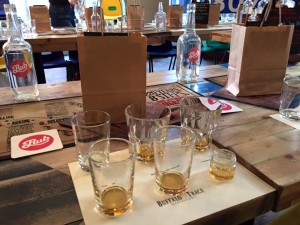 Naturally the thing that had attracted many of my companions that night was the offer of six smalls samples of different whiskeys from the Buffalo Trace collection. The namesake product took pride of place, and although as you’ve heard before Buffalo Trace was one of my less favourite bourbons when I started drinking, time has given me a chance to appreciate its earthy richness, with toasted oak, tobacco leaf, clove and spiced chocolate. The nose has tonnes of smoke, wood and leather. And while I still defend my putting it at the ‘musty’ end of my bourbon spectrum, I have to agree with Drew that it is a splendidly well balanced whiskey.
Naturally the thing that had attracted many of my companions that night was the offer of six smalls samples of different whiskeys from the Buffalo Trace collection. The namesake product took pride of place, and although as you’ve heard before Buffalo Trace was one of my less favourite bourbons when I started drinking, time has given me a chance to appreciate its earthy richness, with toasted oak, tobacco leaf, clove and spiced chocolate. The nose has tonnes of smoke, wood and leather. And while I still defend my putting it at the ‘musty’ end of my bourbon spectrum, I have to agree with Drew that it is a splendidly well balanced whiskey.
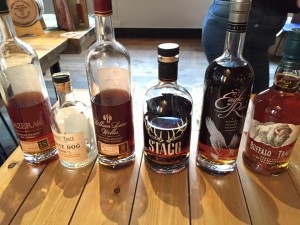 The two whiskeys we were very lucky to try (on account of them not being easily available at all here in the UK) were:
The two whiskeys we were very lucky to try (on account of them not being easily available at all here in the UK) were:
– William Larue Weller: A tribute to the first man to use wheat as the secondary grain in bourbon. The wheat gives it a soft, slightly floral nose, distinctive toffee and a vanilla cream softness and light berry sweetness. A real explosion of taste, hot, thick oak and rich caramel.
– Sazerac 18 year: I do love a rye whiskey me, and what a treat this was! Gentle, dry and spicy nose, dry grains and a grassy freshness. The taste hints at lavender syrup, with notes of lemon and cardamom.
For some people present the tasting was a baptism of fire, as quite a few of the whiskeys offers (especially the Stagg Jr!) were quite a few notches above the 40% ABV most of them were used to from a spirit! But it was immensely satisfying to see people exploring and discussing the different flavours that came to the fore in each bourbon.
Something Drew said that struck me was his frank admission that we don’t yet know what the best way to age whiskey is. Maybe, he remarked, we’ll find out it’s actually to just leave it out in a field, which would be ironic since Buffalo Trace is spending $10m a year on building new warehouses. But it’s because of this that Buffalo Trace has ‘Warehouse X’, where the real experimental stuff takes place. The fruits of this mad laboratory are what we know as the ‘Buffalo Trace Experimental’ range and other projects. (If you have a bit of cash to throw at learning more about that, check out this boxed set from Master of Malt.)
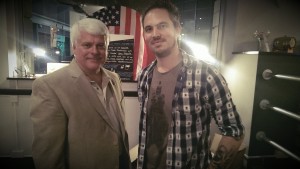 His reassuring promise to us all was this: Buffalo Trace haven’t made their best whiskey yet.
His reassuring promise to us all was this: Buffalo Trace haven’t made their best whiskey yet.
